
A Snellen chart is an eye chart that can be used to measure visual acuity. Snellen charts are named after the Dutch ophthalmologist Herman Snellen, who developed the chart in 1862. Many ophthalmologists and vision scientists now use an improved chart known as the LogMAR chart.

Jamides, commonly called ceruleans, is a genus of butterflies in the family Lycaenidae. The species of this genus are found in the Indomalayan realm, the Palearctic realm and the Australasian realm.

Barsine is a genus of moths in the family Erebidae.

Cisthene is a genus of lichen moths in the family Erebidae. The genus was erected by Francis Walker in 1854.
Nishada is a genus of moths in the family Erebidae. They are found in India, Sri Lanka, Myanmar, Sumatra, and Borneo.
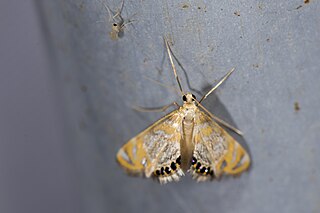
Nymphicula is a genus of moths of the family Crambidae.

Pyrausta is a speciose genus of moths of the family Crambidae. The genus was erected by Franz von Paula Schrank in 1802.

Patania is a genus of moths of the family Crambidae described by Moore in 1888.

Cisthene plumbea, the lead-colored lichen moth, is a moth of the family Erebidae. The species was first described by Richard Harper Stretch in 1885. It is found in eastern North America, from southern New Jersey south to northern Florida, west to Wisconsin and Texas.
Cisthene or Kisthene was a coastal town in ancient Aeolis, opposite Lesbos Island, in western Mysia; its mines were a source of copper. Its location is not certain, but it is generally considered to be near modern Ayvalık on the northwestern Aegean coast of Turkey.
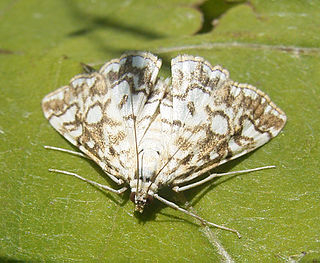
Acentropinae is a fairly small subfamily of the lepidopteran family Crambidae, the crambid snout moths. Species of this subfamily are exclusively found in wetlands and aquatic habitats.
Cisthene coronado is a moth of the family Erebidae first described by Carroll B. Knowlton in 1967. It is found in the US state of Arizona.
Cisthene deserta is a moth of the family Erebidae. It was described by Felder in 1868. It is found in North America, where it has been recorded from Utah and California.

Cisthene picta, the pictured lichen moth, is a moth of the family Erebidae. It was described by William Barnes and James Halliday McDunnough in 1918. It is found in the United States from Texas to Arizona. The habitat consists of deserts.
Cisthene subrufa, the Tamaulipan lichen moth, is a moth of the family Erebidae. It was described by William Barnes and James Halliday McDunnough in 1913. It is found in the United States in Arizona and from San Benito, Texas south to Veracruz in Mexico.
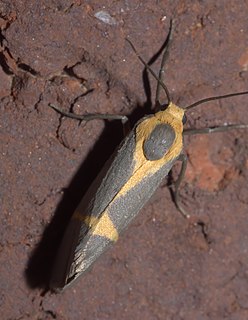
Cisthene tenuifascia, the thin-banded lichen moth or three-banded lichen moth, is a moth of the family Erebidae. It was described by Leon F. Harvey in 1875. It is found in Mexico and from Arizona to Florida, North Carolina and Oklahoma. Strays can be found further north.
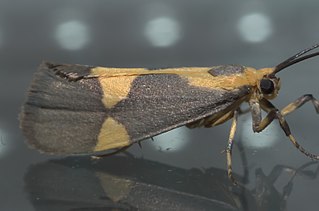
Cisthene unifascia is a moth of the family Erebidae. It was described by Augustus Radcliffe Grote and Coleman Townsend Robinson in 1868. It is found in the southern United States and Mexico.

The Cisthenina are a subtribe of lichen moths in the family Erebidae, currently containing 428 described species.
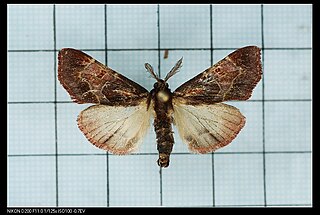
Sacada is a genus of snout moths described by Francis Walker in 1862.

Jamides philatus, the Burmese caerulean, is a butterfly in the family Lycaenidae. It was described by Pieter Cornelius Tobias Snellen in 1877. It is found in the Indomalayan realm.














